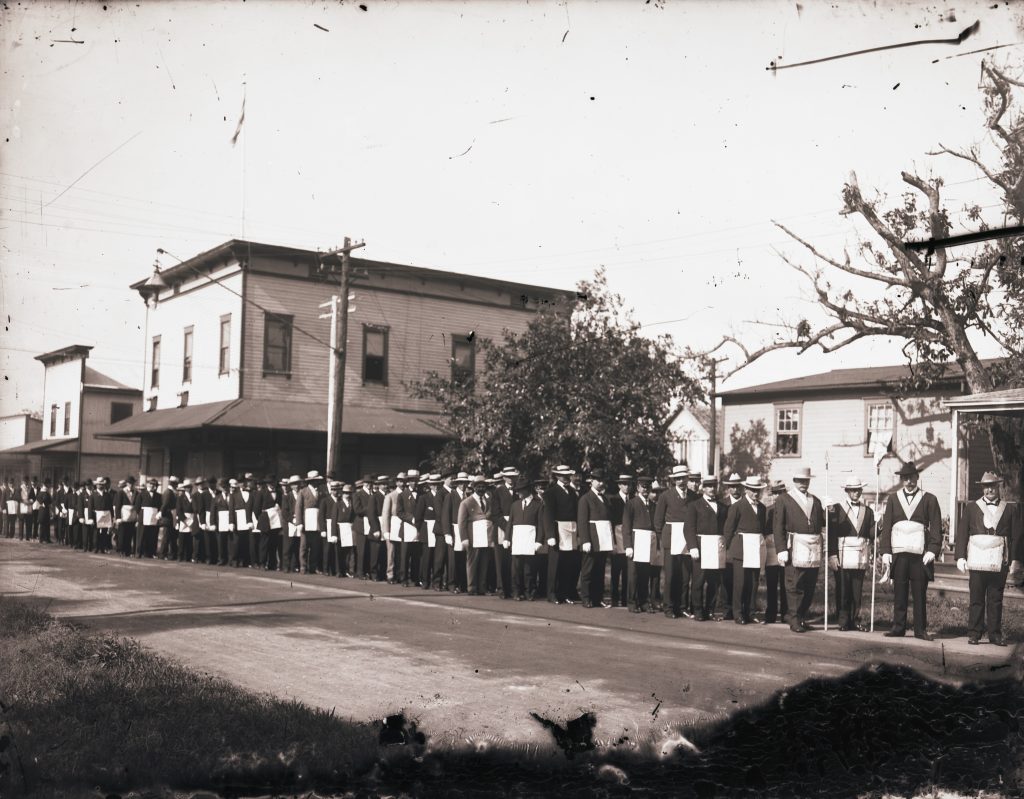Cooperative associations based on crafts, ethnicity, and mutual aid date back centuries in both Asia and Europe. In the late 19th and 20th centuries, Americans of similar social and economic status often created exclusive and sometimes secretive groups. Many men belonged to a lodge. 19th and 20th century fraternal organizations in Hilo, Hawaiʻi included the Ancient Order of Foresters, Benevolent and Protective Order of Elks, Kilauea Lodge (Free and Accepted Masons), Scottish Rite Masons, and Order of Owls. Hawaiians formed distinct organizations such as the Royal Order of Kamehameha and the ‘Ahahui Ka‘ahumanu (Ka‘ahumanu Society). Immigrant groups and women in Hawaiʻi started similar organizations.
The Lyman Museum preserves a large photograph collection which includes images of many community organizations. To learn more, the Archives is open for research by appointment: https://lymanmuseum.org/archives/.
Note: Hawaiian diacritical marks comprise just two symbols: the ʻokina (glottal stop) and the kahakō (macron). We use them with Hawaiian place names, but do not add them to proper names if a family or a company does not use them.








